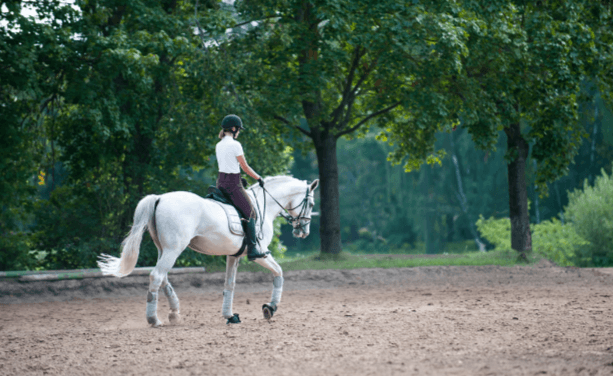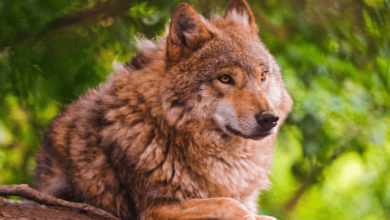What are the differences between a walk, trot, canter, and gallop?

Introduction
Understanding the different gaits of a horse—walk, trot, canter, and gallop—is essential for riders, trainers, and equine enthusiasts. These gaits are the foundation of a horse’s movement and each serves distinct purposes in various equestrian disciplines. This article delves into the intricacies of each gait, highlighting their characteristics, benefits, and how they influence the training and performance of a horse.
What is a Walk?
The walk is the slowest of the horse’s gaits, typically averaging about 4 miles per hour. It is a four-beat gait, meaning that each of the horse’s feet hits the ground independently in a regular sequence: left hind, left front, right hind, right front. This results in a steady, rhythmic motion that is smooth and easy for both the horse and rider.
Characteristics of a Walk
A walk is characterized by its even pace and balanced movement. Each leg moves independently, creating a smooth and gentle rocking motion. The horse’s head and neck move naturally in coordination with the steps, helping to maintain balance and rhythm. This gait is particularly beneficial for warming up and cooling down a horse before and after more strenuous activities.
Training Techniques for a Walk
Training a horse to walk properly involves encouraging relaxation and rhythmic movement. Riders should focus on maintaining a light, consistent contact with the reins and encouraging the horse to stretch its neck and back. It’s important to avoid rushing the walk, as this can disrupt the horse’s balance and rhythm.
What is a Trot?
The trot is a two-beat diagonal gait where the horse’s legs move in pairs: the left front leg and the right hind leg move forward simultaneously, followed by the right front leg and left hind leg. This gait is faster than a walk, usually averaging around 8 to 12 miles per hour, and has a distinctive, bouncy movement.
Characteristics of a Trot
A trot is characterized by its springy, cadenced motion. The horse’s diagonal legs move together, creating a balanced, rhythmic gait. There are two variations of the trot: the posting trot, where the rider rises and falls in rhythm with the horse’s movement, and the sitting trot, where the rider remains seated. The trot is an essential gait for developing a horse’s fitness and strength.
Training Techniques for a Trot
Training a horse to trot involves promoting balance and impulsion. Riders should practice both posting and sitting trots to improve their own balance and the horse’s responsiveness. Consistent rein contact and leg aids help maintain a steady rhythm and encourage the horse to engage its hindquarters.
What is a Canter?
The canter is a three-beat gait that is faster than the trot but slower than the gallop, typically averaging between 10 and 17 miles per hour. It has a distinct rhythm: one hind leg hits the ground first, followed by the diagonal pair of the opposite hind leg and the opposite front leg, and finally the leading front leg.
Characteristics of a Canter
A canter is characterized by its rolling, rhythmic motion. It is often considered the most comfortable gait for both horse and rider, providing a smooth, flowing ride. The canter has three variations: the collected canter, the working canter, and the extended canter, each with different levels of speed and stride length.
Training Techniques for a Canter
Training a horse to canter involves developing a balanced, rhythmic movement. Riders should focus on maintaining consistent rein contact and using leg aids to encourage impulsion. Practicing transitions between walk, trot, and canter helps improve the horse’s responsiveness and balance.
What is a Gallop?
The gallop is the fastest of the horse’s gaits, averaging speeds between 25 and 30 miles per hour. It is a four-beat gait, where each foot hits the ground separately: one hind leg, the other hind leg, the leading front leg, and the opposite front leg. This gait is used for high-speed activities such as racing and cross-country riding.
Characteristics of a Gallop
A gallop is characterized by its rapid, powerful movement. The horse’s body stretches out, and its legs cover significant ground with each stride. The rhythm of the gallop creates a pounding, thunderous sound, and the horse’s breathing becomes synchronized with its strides.
Training Techniques for a Gallop
Training a horse to gallop involves building speed and endurance. Riders should focus on developing the horse’s strength and stamina through interval training and conditioning exercises. It’s important to gradually increase the duration and intensity of galloping sessions to avoid overworking the horse.
Differences in Speed and Rhythm
The primary differences between a walk, trot, canter, and gallop lie in their speed and rhythm. The walk is the slowest, with a steady four-beat rhythm. The trot is faster with a two-beat diagonal rhythm. The canter is a three-beat gait with a rolling motion, while the gallop is the fastest, with a four-beat rhythm.
Differences in Leg Movement
Each gait involves different patterns of leg movement. The walk features independent movement of each leg, while the trot involves diagonal pairs of legs moving together. The canter has a distinct three-beat pattern, and the gallop involves a rapid four-beat sequence with each leg moving separately.
Differences in Rider Experience
Rider experience varies significantly between the gaits. The walk is the most comfortable and easiest to sit, making it ideal for beginners. The trot can be more challenging due to its bouncy motion, requiring riders to develop balance and rhythm. The canter is smooth and flowing, often considered the most pleasant gait. The gallop, with its high speed and power, requires advanced riding skills and confidence.
Differences in Training Focus
Training focus differs for each gait. Walking emphasizes relaxation and rhythm, trotting focuses on balance and impulsion, cantering requires developing a smooth, rhythmic movement, and galloping involves building speed and endurance. Each gait contributes to the overall training and development of a horse’s athleticism.
Benefits of Understanding Each Gait
Understanding each gait allows riders and trainers to utilize them effectively in training and performance. It helps in developing a well-rounded horse capable of performing various tasks with ease and efficiency. Knowledge of the gaits also enhances communication between horse and rider, leading to a more harmonious partnership.
Conclusion
Recognizing and understanding the differences between a walk, trot, canter, and gallop is fundamental for anyone involved with horses. Each gait has its unique characteristics, benefits, and training techniques that contribute to a horse’s overall performance and well-being. By mastering these gaits, riders can enhance their skills and enjoy a more rewarding experience with their horses.
FAQs
What is the main difference between a trot and a canter? The main difference lies in the rhythm and speed. A trot is a two-beat gait with diagonal pairs of legs moving together, while a canter is a three-beat gait with a distinct rolling motion.
How fast can a horse walk? A horse typically walks at an average speed of about 4 miles per hour.







